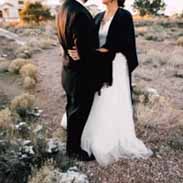Flashcards and Answers – Human Anatomy and Physiology Chapter 1
Unlock all answers in this set
Unlock answersquestion
Anatomy
answer
the study of the structure and the shape of the body parts and their relationships to one another
question
Physiology
answer
the study of how the body parts work or function
question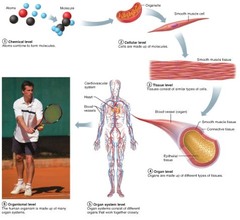
Levels of structural Organization

answer
atoms, molecules, cells, tissues, organ, organ system, organism
question
Integumentary system (Skin)
answer
covers and waterproofs the body, cushions and protects the deeper tissues, excretes salts and urea in perspiration and helps regulate body temp., and contains temp., pressure and pain receptors.
question
Skeletal System (Bones, cartilages, ligaments, and joints)
answer
Supports the body and provides framework, protects underlying organs, formation of blood cells, stores minerals
question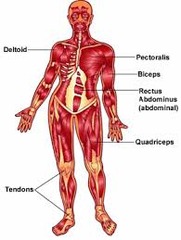
Muscular System (Skeletal muscle)

answer
Movement, facial expression; maintains posture; produces heat
question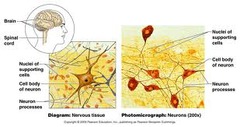
Nervous System (Brain, sensory receptors, spinal cord, nerves)

answer
The body's fast-acting control center; responds to external and internal changes by activating the appropriate muscles and glands
question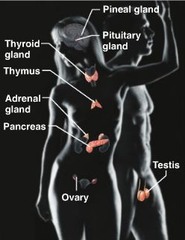
Endocrine system (Pineal gland, pituitary gland, thyroid gland, thymus gland, adrenal glands, pancreas, testis, ovary)

answer
Glands secrete hormones that regulate processes such as growth, reproduction, and nutrient use (metabolism) by body cells
question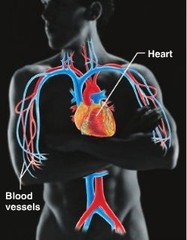
Cardiovascular System (Heart and blood vessels)

answer
Heart pumps blood, blood vessels transport blood, which carries nutrients, waste, oxygen and carbon dioxide, etc...
question
Lymphatic System (Lymph nodes, lymphatic vessels, thoracic duct, spleen, and tonsils)
answer
Picks up fluid leaked from blood vessels and returns it to blood; disposes of debris in the lymphatic stream; houses white blood cells involved in immunity.
question
Respiratory system (Nasal cavity, pharynx, larynx, trachea, bronchus, and lungs)
answer
Keeps blood constantly supplied with oxygen and removes carbon dioxide; the gaseous exchanges occur through the walls of the air sacs of the lungs.
question
Digestive System (Oral cavity, esophagus, stomach, small intestine, large intestine, rectum, anus)
answer
Breaks down food into absorbable units that enter the blood for distribution to body cells; indigestible foodstuffs are eliminated as feces.
question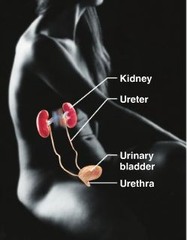
Urinary System (Kidneys, Ureter, Urinary bladder, and Urethra)

answer
Eliminates nitrogenous wastes from the body; regulates water, electrolyte, and acid-base balance of the blood.
question
Homeostasis (dynamic state of equilibrium)
answer
Describes the bodies ability to maintain relatively stable internal conditions even though the outside world is continuously changing.
question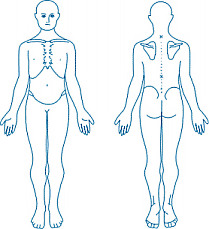
Anatomical Position

answer
The body is erect with the feet parallel and the arms hanging at the sides with the palms facing forward.
question
superior
answer
toward the head end or upper part of a structure or the body; above
question
inferior
answer
away from the head end or toward the lower part of a structure or the body; below
question
ventral
answer
toward or at the front of the body; in front of
question
dorsal
answer
toward or at the backside of the body; on the inner side of
question
medial
answer
toward or at the mid-line of the body; on the inner side of
question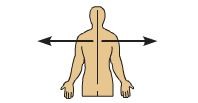
lateral

answer
Away from the mid-line of the body; on the outer side
question
proximal
answer
close to the origin of the origin of the body part or the point of attachment of a limb to the body trunk
question
distal
answer
farther from the origin of a body part or the point of attachment of a limb to the body trunk
question
superficial
answer
toward or at the body surface
question
deep

answer
away from the body surface; more internal
question
abdominal
answer
anterior body trunk inferior to ribs
question
acromial
answer
point of shoulder
question
antebrachial
answer
forearm
question
antecubital
answer
anterior surface of elbow
question
axillary
answer
armpit
question
brachial
answer
arm
question
buccal
answer
cheek area
question
carpal
answer
wrist
question
cervical
answer
neck region
question
coxal
answer
hip
question
crural
answer
leg
question
deltoid
answer
curve of shoulder formed by large deltoid muscle
question
digital
answer
fingers, toes
question
femoral
answer
thigh
question
fibular
answer
lateral part of the leg
question
frontal
answer
forehead
question
inguinal
answer
area where thigh meets body trunk; groin
question
nasal
answer
nose area
question
oral
answer
mouth
question
orbital
answer
eye area
question
patellar
answer
anterior knee
question
pelvic
answer
area overlying the pelvis anteriorly
question
pubic
answer
genital region
question
sternal
answer
breastbone area
question
tarsal
answer
ankle region
question
thoracic
answer
chest
question
umbilical
answer
navel
question
calcaneal
answer
heel of foot
question
cephalic
answer
head
question
gluteal
answer
buttock
question
lumbar
answer
area of back between ribs and hips
question
occipital
answer
posterior surface of head
question
olecranal
answer
posterior surface of elbow
question
popliteal
answer
posterior knee aea
question
sacral
answer
area between the hips
question
scapular
answer
shoulder blade region
question
sural
answer
the posterior surface of lower leg; the calf
question
vertebral
answer
area of the spine
question
plantar region
answer
the sole of the foot

